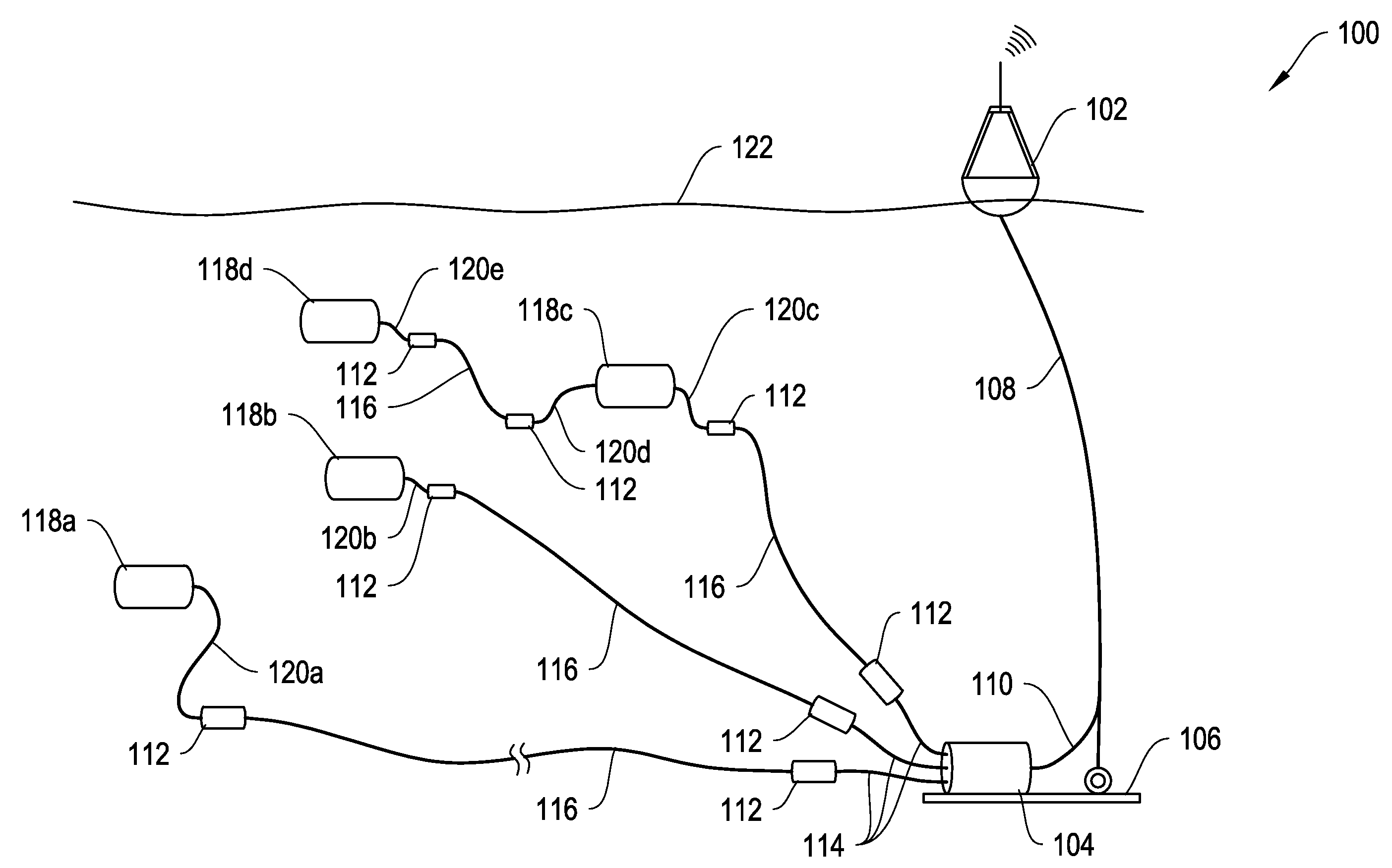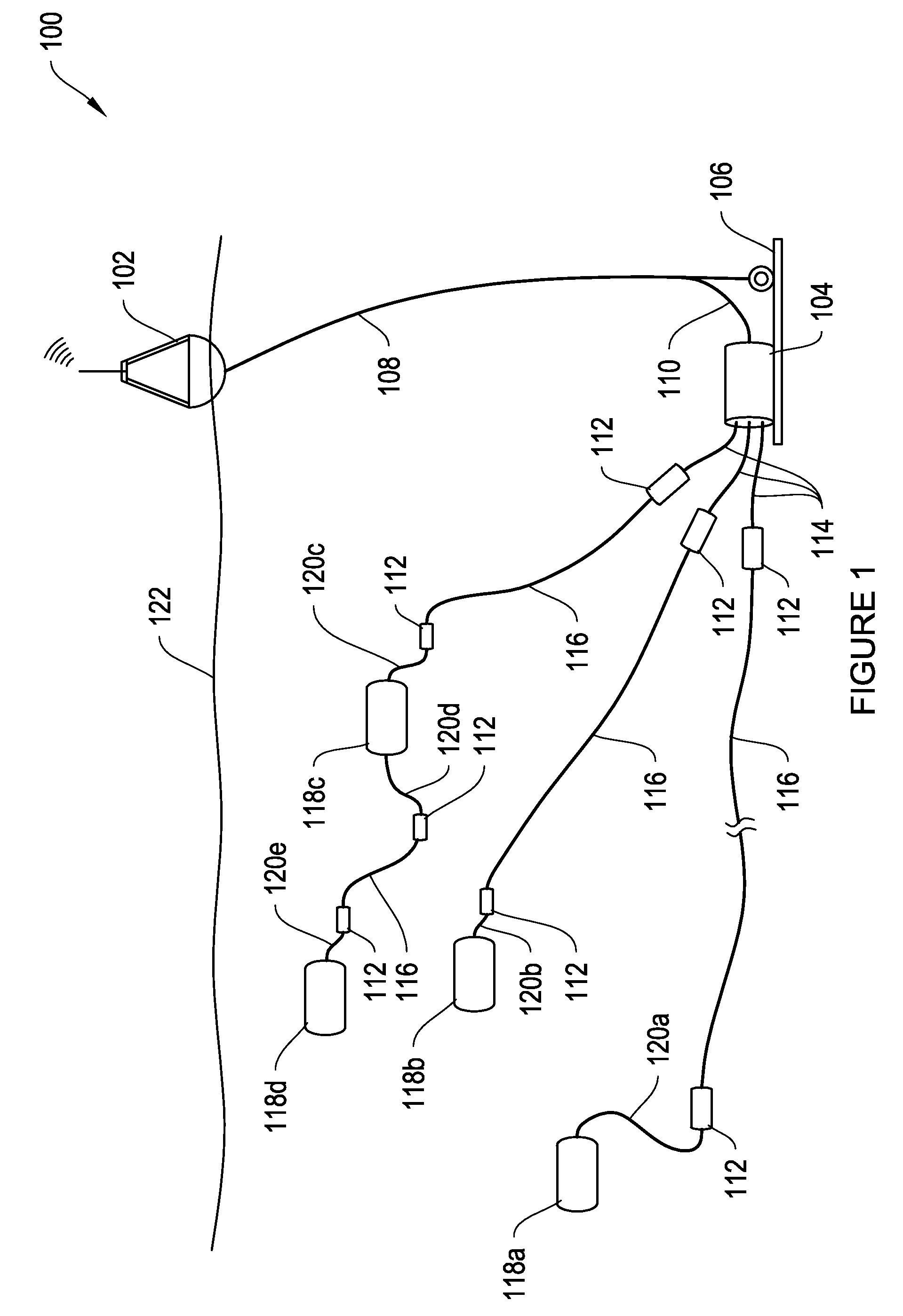Fiber optic observatory link for medium bandwidth data communication
a fiber optic observatory and data communication technology, applied in electromagnetic transmission, electrical equipment, electromagnetic network arrangements, etc., can solve the problems of large, cumbersome and costly deployment, severe limitations in the distance that instruments can be deployed from the observatory, etc., and achieve low cost, low power, and easy deployment
- Summary
- Abstract
- Description
- Claims
- Application Information
AI Technical Summary
Benefits of technology
Problems solved by technology
Method used
Image
Examples
Embodiment Construction
The systems and methods described herein will now be described with reference to certain illustrative embodiments. However, the invention is not to be limited to these illustrated embodiments which are provided merely for the purpose of describing the systems and methods of the invention and are not to be understood as limiting in anyway.
FIG. 1 depicts a long range subsea sensor and communication network 100, according to an illustrative embodiment of the invention. System 100 includes a cabled ocean observatory 104 submerged under a water body 122 at a desired depth. A cabled ocean observatory may be designed around either a surface buoy containing an autonomous power source and wireless (e.g., satellite) communications link or a submarine fiber optic / power cable connecting one or more seafloor science nodes to the terrestrial power grid and communications backhaul. A cabled ocean observatory may provide unprecedented amounts of power and two-way bandwidth to access and control ins...
PUM
 Login to View More
Login to View More Abstract
Description
Claims
Application Information
 Login to View More
Login to View More - R&D
- Intellectual Property
- Life Sciences
- Materials
- Tech Scout
- Unparalleled Data Quality
- Higher Quality Content
- 60% Fewer Hallucinations
Browse by: Latest US Patents, China's latest patents, Technical Efficacy Thesaurus, Application Domain, Technology Topic, Popular Technical Reports.
© 2025 PatSnap. All rights reserved.Legal|Privacy policy|Modern Slavery Act Transparency Statement|Sitemap|About US| Contact US: help@patsnap.com



